Streamlining Design Workflows During the Pittsburgh International Airport Project
Abstract Group is an architecture firm that has been operating since 2017. Abstract represents a distillation of the precepts the partners have learned from 70+ years of experience at airports, and the insights they have gained from clients, collaborators, and the deep trends that affect the aviation industry.

- Project
Pittsburgh International Airport Airside Renovation
- Location
Pittsburgh, Pennsylvania
- Project Type
Air Transportation
- Industry
Architecture
- Download as PDF
- Share this:
Revizto × Abstract Group: Pittsburgh Airport Case Study
Centralized, Streamlined, and Collaborative Design Workflow of One of the Largest American Airports
Abstract Group is an architecture firm that has been operating since 2017. Abstract represents a distillation of the precepts the partners have learned from 70+ years of experience at airports, and the insights they have gained from clients, collaborators, and the deep trends that affect the aviation industry.
Scott Deisher, an associate, registered architect, and design researcher at Abstract, shared how Revizto became the foundation for building a centralized, streamlined, and collaborative workflow throughout the design phase of the Pittsburgh Airport’s renovation project.
How the Revizto Partnership Began
Abstract Group is the design manager for a complex renovation program for the airside building at Pittsburgh International Airport. Abstract is responsible for initiating and managing the project’s overarching design and data organization strategy, beginning with scope development and continuing through construction documentation and administration. After much deliberation, Abstract Group’s management decided to use Revizto for the project, recognizing that it is a fast and efficient software for collaboration and viewing information.

Initially, Abstract used Revizto to verify existing conditions, visually inspect geometry provided from past projects at the airport, and host initial design conversations. Since then, their usage of Revizto has evolved into semantic design, clash automation, generating viewpoints for wayfinding studies, and much more.
The Pittsburgh Airport Airside Renovation Program is a lengthy project and the Project’s team comprises nearly ten different companies in a variety of disciplines: architecture, structure, mechanical, electrical, telecom, fire protection, plumbing, lighting, and acoustics, working remotely across Pittsburgh, Baltimore, Miami, Denver, and Houston. Revizto was also implemented to solve coordination issues and enhance collaboration across a large multidisciplinary team.
Having to accommodate thousands of flights and millions of travelers, airports are complex facilities to design. Airport projects primarily differ from other construction projects in terms of sheer size, number of interrelated building systems, and the importance of maintaining safe operations throughout construction.
With such large buildings, issues can vary in location by nearly a half mile, complicating the review process beyond what you'd expect in a typical project.
When you’re working with an airport the size of a couple of city blocks, there must be customizable tools to handle such enormous projects. At any point in the project, teams might introduce phases that don’t map to existing models. For example, mechanical engineers might have a temporary phase they want to use in their model. You would have to dig pretty deep into the settings to turn off their phase and view the model per your requirements. With Revizto, a couple of clicks are necessary to change the view settings, but you’re doing it in the 3D model itself, which saves considerable time
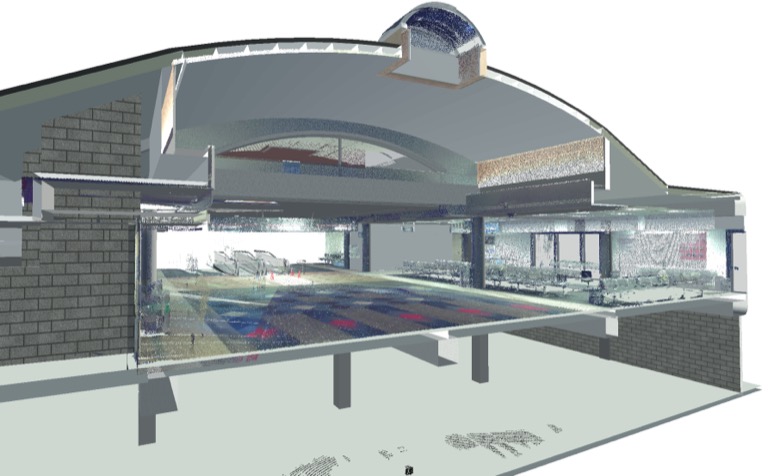
How Revizto Solved Abstract’s Pain Points
Checking Existing Revit Information Against the Point Cloud
The Design team had a robust set of laser scanners from which point clouds were generated to provide a detailed 3D representation of critical areas in the airport. That information was brought into Revizto, along with existing Revit models and the team was able to validate the model to the scanned data and make adjustments where they noted discrepancies.
Too Many Moving Parts
A key aspect of Revizto is simplifying the user's experience and providing a platform for a productive collaborative effort. Before utilizing Revizto, Scott noted that most point cloud workflows have a steep learning curve and require data to be processed through proprietary systems and passed through multiple plugins before being viable for usage. In his words, “There were too many moving parts before using Revizto.”
Navigating the Software
Scott noted that when it came to other software, his computer would lock up, and he wouldn't be able to navigate the model freely. You would have to manually manage various visibility settings to be able to do so.
Collaborating with a Large Team
Collaboration is the cornerstone of any construction project that must be completed within budget and deadline. Since airport projects are colossal, there are many people involved. Four architecture companies operated from four remote locations, overseeing the Pittsburgh Airport Project. Those are just the architects; when you add in engineers, researchers, and other consultants, there are nearly 100 different people working remotely from several countries.
Scott recalled with so many people working remotely in different locations and time zones, his team would constantly get new project information coming in at different times and in varying formats. He continued, "Having a place like Revizto, where you can take all of that information and host it in the same place, creates a single source of truth that can grow throughout the life of the project."
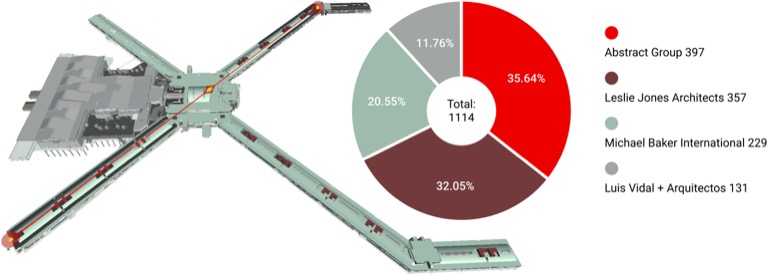
That’s definitely one of the things you notice in Revizto right away – the speed of navigation, even in an enormous model, like the Pittsburgh airport. We were flying through the project very quickly. The fact that you can view these huge point clouds in the software and continue navigating around the model at the same speed is incredibly useful.
Pinpointing Documents, PDFs, and Files
The larger construction projects are, the harder it becomes to locate certain files. Scott noted that important information used to live in some random email where not every relevant person was copied. They didn’t know if decisions were finalized. Having information inside someone’s live Revit model didn’t work because certain people didn’t have the necessary permissions to view it. Some people couldn’t even use Revit.
Scott assuredly noted that Revizto definitely helps alleviate that issue. He also likes that you can log into SharePoint or BIM360 from Revizto and have your PDFs, models, and drawings in one location. He continued, "Being able to attach externally hosted documents directly to issues inside Revizto is pretty clever."
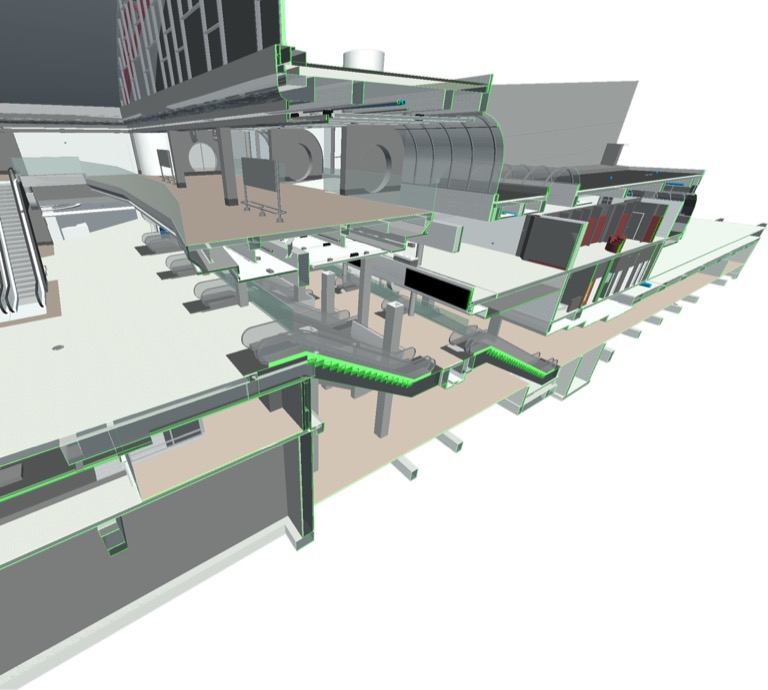
Conflicting Revit Files
Another unique pain point the team encountered was dealing with multiple versions of Revit. For instance, the renovation project is being designed in Revit 2022, and an adjoining new construction project was designed in Revit 2019 and is still being modified as that project is being built. They needed a solution to use both Revit models simultaneously since varying versions are not backward compatible. One way they could solve this issue would be to regularly upgrade the entire 2019 system of models on a local drive, which is quite time-consuming, especially in large projects. On the other hand, Revizto facilitates multiple versions of Revit.
Revizto allowed us to import those models into the same location without converting their versions. You can have your 2019 and 2022 models in the same three-dimensional space without having to go through the issue of regularly updating the entire model. This is another pain point that Revizto was really good at solving.
Delegating Tasks
Large projects have an enormous amount of tasks delegated daily. When these tasks are not orderly-tracked in a user-friendly environment, delays and other unwelcome issues can arise during planning and construction.
Scott and his team used Revizto’s stamps for task delegation. They created stamps for each discipline. For example, once the electrical team gets assigned a stamp, the assignee of that stamp is automatically going to be the “BIM lead” for the electrical team. The rest of the team plus the management level above, would then be tagged as “watchers” so that they can track the issues under those stamps.
Additionally, you don’t have to get rid of all the old information. You can close out issues, and they can disappear if you want them to, but you can also bring them back when needed.
Tracking Issues and Staying Organized
Going through your inbox to find a conversation you had a few months ago is quite bothersome. The larger the project, the further you must dig to find what you need. This is especially true if you need to start individual conversations to jumpstart a task. With Revizto, we solved this pain point.
Scott shared a workflow that emphasizes the mechanics of communication that are straightforward, effective, and optimal. His team uses stamps to assign issues to the BIM support team and mark them with priorities. This means they don’t have to email or set up meetings with BIM support because they expect that their team can write enough information about the issue in the chat function to pick it up from there when an issue is assigned to them.
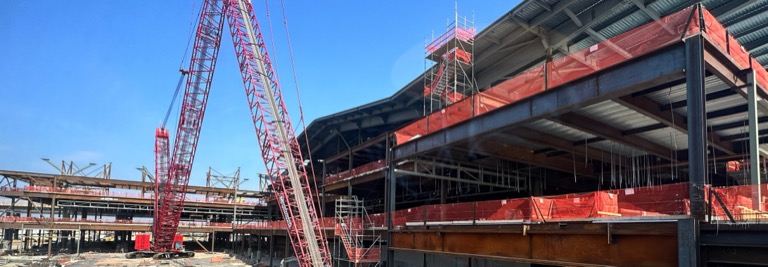
Scott’s Favorite Revizto Features
The number of emails we’ve been able to reduce about model and design issues is enormous. The issues are placed, we have relevant watchers on each issue, and people jump into the chat box and discuss it. We send screenshots and use all of the annotation and attachment features. And now, especially with airports, you can sort issues by concourse and center of the building.
Utilizing Additional Software for Clash Detection
When too many pieces of software are involved in a construction project, it becomes an arduous process to keep everything in sync. Revizto is an all-in-one collaboration platform encompassing all necessary design and construction software elements. You don’t need external software to do what you need to do.
Scott noted that one of the things he likes about Revizto is that the number of use cases you get out of it can grow the more you put in.
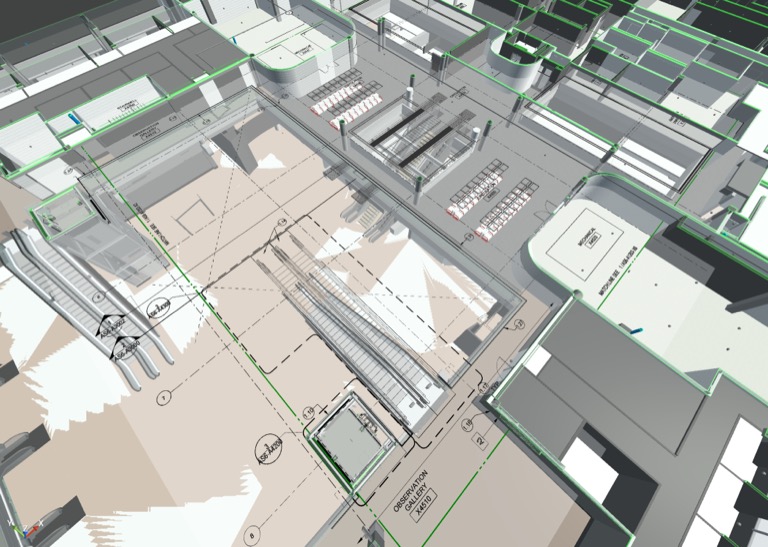
Scott’s Top Tips for Using Revizto
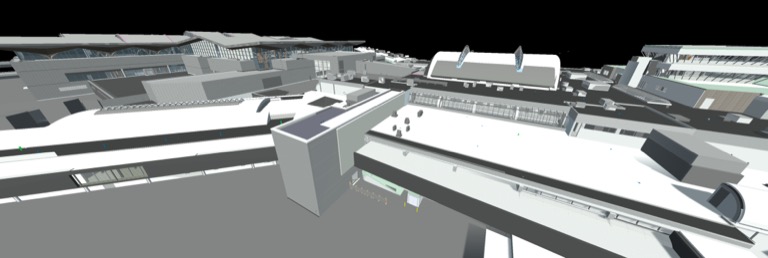
I found that in Revizto, you can turn on the whole model, create a section box, and switch back to Revit faster than creating a section box natively in Revit. The speed of that process feels more similar to Rhino, which is what the majority of our office is most comfortable with. That’s really useful to us.
Using Revizto extensively throughout the design phase of the Pittsburgh Airport airside renovation project has really made an impact in saving time on previous manual tasks, increasing and streamlining collaboration among team members, and solving Abstract Group’s remaining pain points. With regular updates coming to Revizto as well as continued support from our Customer Success team, their use cases will expand even further, making collaboration with an integrated platform a more adamant element of all their current and future projects.


